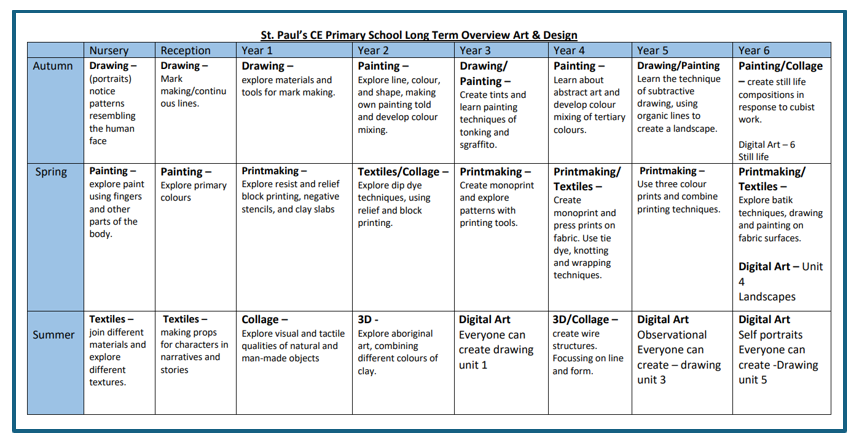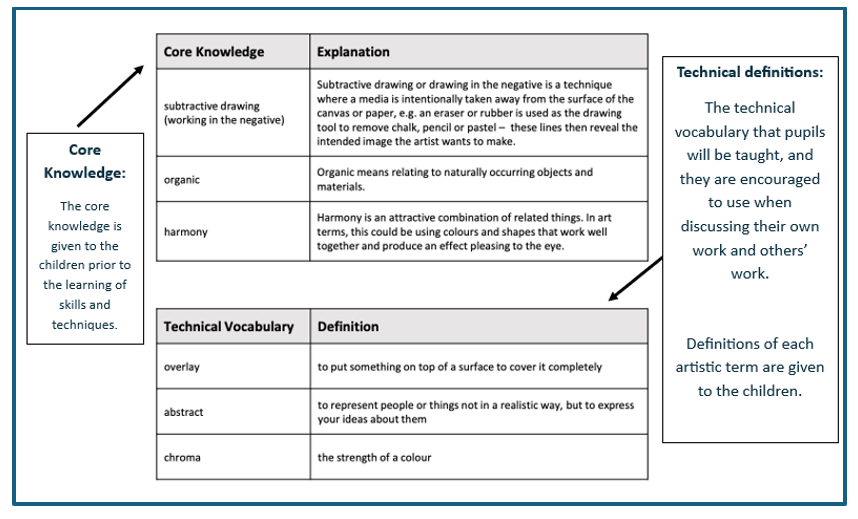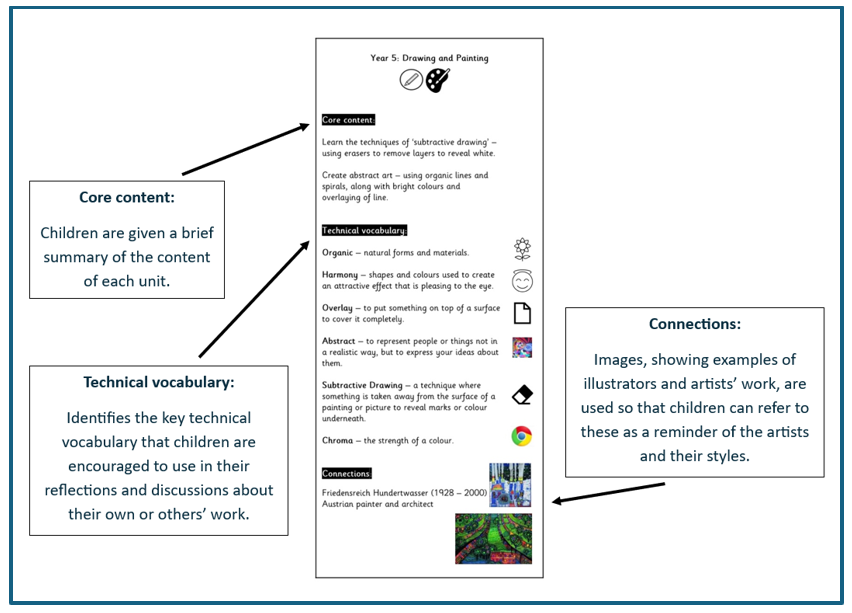Art & Design
At St. Paul’s, we aim to provide a high-quality Art and Design education which inspires pupils to acquire knowledge, as an artist, and enable them to skillfully apply their understanding, whilst being exposed to a wide range of artists.
The Art curriculum at St. Paul’s is planned around the key elements of:
- Drawing
- Painting
- Printmaking
- Textiles
- Collage
- 3D
- Digital Art
Artistic enquiry begins in the Early Years, as the children start to notice patterns and develop mark making. Our children in Early Years explore different materials freely and express their ideas and feelings through artistic techniques.
In Key Stage 1, children begin to learn about line, colour, and shape. They begin to learn about the range of techniques required for printmaking, and how to experiment with natural and man-made materials. Children in Key Stage 1 have the opportunity to study art from all over the world and describe similarities and differences between practices of other artists, making links to their own work.
As children move into Key Stage 2, they continue to develop their knowledge of form, tone, texture, and colour, while developing their techniques, including their control and their use of materials. Children are given regular opportunities to experiment and develop their creativity, using sketch books, technology and making links to great artists and designers in history. They are given opportunities to record their observations and use them to review and revisit ideas.
Enrichment opportunities are woven in throughout the year, with artist visits and workshops and the opportunity to use specialist facilities at a local secondary school.

Art and Design at St. Paul's
Mapping of Key Knowledge
The sequence of learning has been mapped out across the Art & Design curriculum, with clear essential and desirable knowledge identified.
The Art & Design curriculum is organised into blocks with each block covering a particular set of artistic disciplines, including drawing, painting, printmaking, textiles, 3D and collage. Vertical progression in each discipline has been deliberately woven into the fabric of the curriculum so that pupils can revisit key disciplines throughout their Primary journey at increasing degrees of challenge and complexity.
In addition to the core knowledge required to be successful within each discipline, the curriculum outlines key aspects of artistic development in the Working Artistically (Disciplinary Knowledge) section. Each module will focus on developing different aspects of these competencies. This will support teachers in understanding pupils’ development as artists more broadly, as well as how successfully they are acquiring the taught knowledge and skills.

Vital Vocabulary
Vital vocabulary is identified in each unit of learning, which enables our pupils to access a range of tier 2 and tier 3 vocabulary.

Knowledge Notes
The use of knowledge notes in Art and Design, are used to enhance children’s learning as they are encouraged to use the key vocabulary and retrieve styles of an artist throughout the unit.
Retrieval Practice
'Using your memory, shapes your memory.' Bjork (2012)
Retrieval practice is used in Art and Design as a powerful learning tool. It is used to:
- Support later retention and retrieval
- Identify gaps in knowledge
- Organise knowledge more effectively
- Provide valuable feedback to teachers
- Improve metacognition
- Improve transfer of knowledge to new contexts
When designing their lessons, teachers plan in regular opportunities for retrieval practice.






